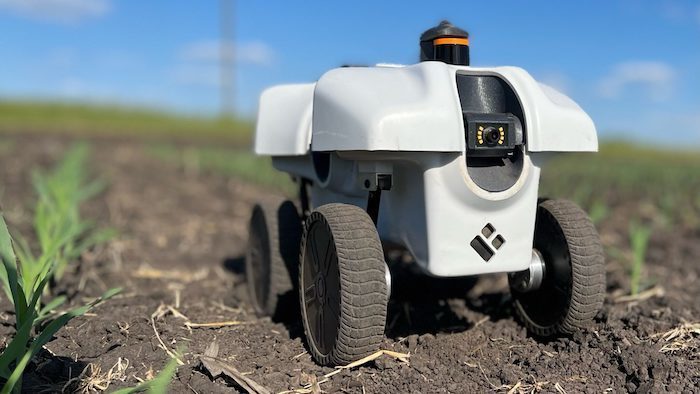For US farmers, enormous GPS-guided equipment makes easier work of planting and harvesting thousands of acres each season.
Now, thanks to a partnership between the University of Illinois’s Center for Digital Agriculture, a collaboration among the College of Agricultural Consumer and Environmental Sciences, Grainger College of Engineering, the National Center for Super Computing Applications and robotics start-up EarthSense, some of the work is being assigned to machines of a much smaller scale.
EarthSense CEO Chinmay Soman came to the University of Illinois Urbana-Champaign (UIUC) as a postdoctoral student to look at agricultural sustainability through the lens of soil health.
“UIUC has the best Ag research, but we also have the best engineering and computer science,” he says.
Meanwhile, friend and colleague Girish Chowdhary, Ph.D. and Associate Professor in Agricultural and Biological Engineering at UIUC, has been focused on AI and robotics and is also chief scientist of the Illinois Autonomous Farm (IAF). The two saw an opportunity to collaborate, and the idea for EarthSense germinated.
In addition to his work with IAF, Chowdhary also teaches robotics at the university. However, building a robot in a lab is a far cry from putting a manufacturing process in place. He noted having industrial partnerships, such as with EarthSense, are key to bringing great ideas to life.
“What having plug-and-play PCs did for computer science is similar to what it means to have access to EarthSense robots,” Chowdhary says.
Because when robots can be made in bulk, it makes a world of difference in bug-fixing, software development, and a range of product testing that’s unavailable in one-off robot-build projects.
The IAF offered the perfect testing ground.
EarthSense has two main robots with prospects for a third, each tailored to handle different challenges. The first success is the TerraSentia, tested on the IAF after that site was established in 2020.
He expects over the next three to five years, “more data processed by more powerful machines with advanced AI algorithms is likely to move the needle aggressively forward, as it has, in areas like automation, livestock, crop sciences – every aspect that incorporates digital and agriculture together.”
Being at the nexus of agricultural technology is great for startups and students as well. The ability to teach agricultural and robotics students on the ground a mere mile from campus at the Illinois Autonomous Farm testbed provides meaningful research experiences for all.
“The fact that the work gets done here in Illinois exposes students to cutting-edge research,” Chowdhary says.
And industrial partners benefit from working with the next generation of leaders in agriculture and technology.





Post a comment
Report Abusive Comment